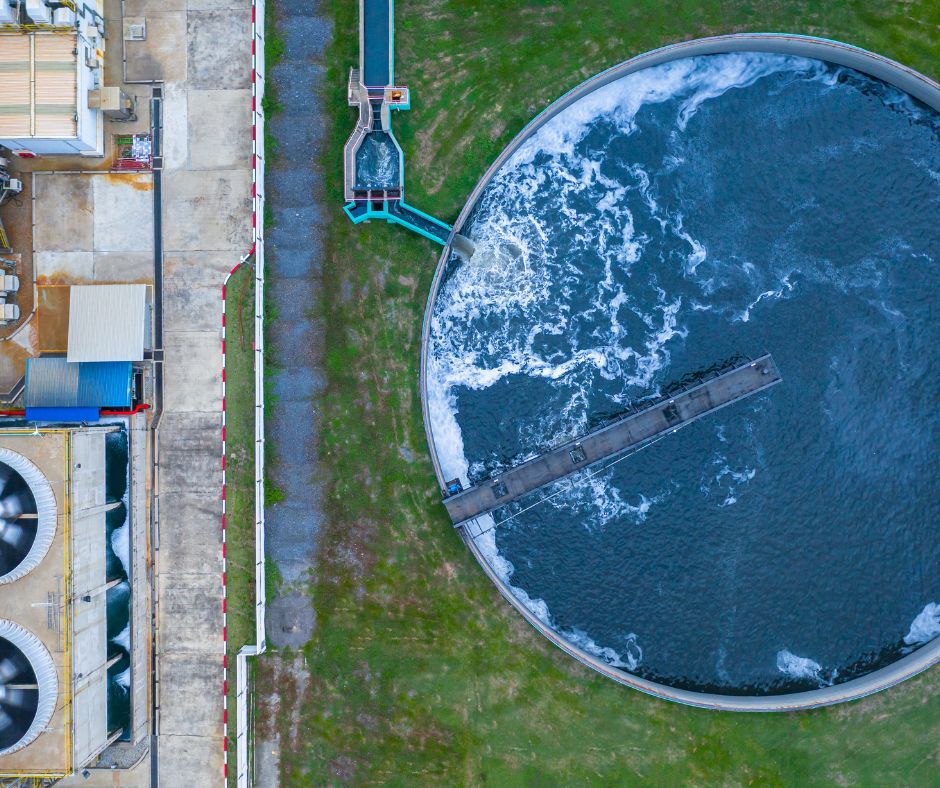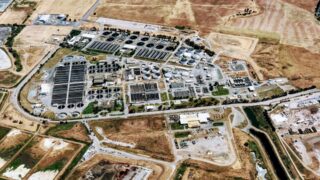PFAS Water Treatment Solutions: Safeguarding Our Environment
Per- and Polyfluoroalkyl Substances (PFAS) are a group of synthetic chemicals that have gained considerable attention due to their widespread presence in water sources and potential health risks.
As we navigate the challenges posed by PFAS contamination, it’s imperative to explore advanced water treatment technologies and PFAS water treatment solutions that can effectively address this issue.
In this blog post, we delve into the science behind PFAS water treatment solutions, discuss innovative solutions such as our Transcend Design Generator, and underscore the urgency of safeguarding our environment from the threats of PFAS contamination.
The Science Behind PFAS Water Treatment
As we look into the various PFAS water treatment solutions, we must first understand the intricate science that underlies the challenges and innovations in this critical field.
The Chemical Structure and Characteristics of PFAS
PFAS compounds are characterized by their strong carbon-fluorine bonds, which contribute to their resistance to heat, water, and degradation. This unique structure also makes them persistent in the environment, leading to bioaccumulation in living organisms.
The prevalence of PFAS in various products, including firefighting foam, non-stick cookware, textiles, and drinking water, has contributed to their widespread contamination in water sources.
Challenges Posed by PFAS in Conventional Water Treatment Processes
Conventional water treatment methods struggle to effectively remove PFAS due to their small molecular size, stability, and resistance to traditional filtration techniques. As a result, PFAS can persist in treated water, posing potential health risks to consumers. This challenge highlights the need for specialized treatment systems that can target and remove these compounds efficiently.
The Importance of Specialized Treatment Systems
Specialized treatment systems and PFAS treatment solutions have emerged as vital solutions to address PFAS contamination. These systems are designed to target the unique and resilient properties of PFAS compounds and ensure their complete removal from water sources.
The integration of specialized treatment systems requires careful consideration and implementation. As the landscape of water treatment evolves, technology becomes a crucial ally. This is where the Transcend Design Generator steps in as a groundbreaking tool for water treatment units. This cutting-edge technology empowers asset owners and utilities to generate preliminary designs that facilitate efficient planning and management of PFAS treatment systems while minimizing project risk and costs.
Advanced PFAS Water Treatment Solutions
Innovation takes center stage as we explore advanced technologies that hold the potential to effectively combat contamination. Therefore, let us look into a range of cutting-edge drinking water treatment systems, each tailored to address the unique challenges posed by the PFAS molecule.
Activated Carbon Filtration: Effectively Removing PFAS From Water
Activated carbon filtration stands as a stalwart in the fight against PFAS contamination. Through its porous structure, granular activated carbon acts as a magnet for PFAS molecules through adsorption, effectively removing them from water sources. This method has garnered substantial attention and is widely studied for its ability to target many PFAS compounds, ensuring a high degree of efficiency in treatment.
Research conducted by Cantoni et al. (2021) demonstrated that microporous ACs, for instance, showcase elevated adsorption capacities for hydrophilic and marginally hydrophobic PFAS compounds. On the other hand, mesoporous ACs exhibit superior performance when dealing with more hydrophobic PFAS compounds. This could potentially be attributed to reduced pore blockage by organic matter, allowing for enhanced effectiveness in PFAS removal.
Ion Exchange Resins: Capturing PFAS Molecules for Safe Disposal
Ion exchange resins present a sophisticated approach to PFAS removal for a treatment system. These resins engage in a chemical exchange process, swapping chloride ions for PFAS molecules, effectively capturing them. The resulting PFAS-laden resins can then be managed and disposed of safely, preventing further environmental contamination.
Recent research findings highlight the efficiency of ion exchange resins in the removal of PFAS, particularly when dealing with short-chain variants. The effectiveness of PFAS removal through this technology hinges on several factors, including:
- the specific functional group of the resin (for instance, tertiary or quaternary amine)
- the polymer matrix
- the porosity, such as gel or macro porosity
- the pH level
- the ionic strength
- and the existence of organic matter and inorganic salts.
The complex interrelationship of these variables highlights the nuanced complexity involved in PFAS removal through ion exchange resins. This emphasizes the requirement for a thorough comprehension of these dynamics to ensure effective implementation.
Membrane Filtration: A Reliable Barrier for PFAS Removal
Membrane filtration, including techniques like reverse osmosis and nanofiltration, emerges as a robust barrier to PFAS molecules. These physical separation methods effectively prevent PFAS from passing through, making them a reliable choice for comprehensive removal from water sources.
Membrane filtration, including reverse osmosis and nanofiltration, acts as a physical barrier to separate PFAS compounds from water. A study conducted by Jin et al concluded that membrane filtration is indeed effective for PFAS treatment, showcasing its potential for PFAS removal. However, considering the pressing nature of PFAS contamination, there exists an imperative to enhance the efficiency and adaptability of existing membrane technologies, especially with a focus on more sustainable approaches.
Advanced Oxidation Processes: Breaking Down PFAS Compounds
Advanced oxidation processes offer a dynamic approach to PFAS removal by breaking down these stubborn compounds into less harmful byproducts. This chemical transformation holds promise in dismantling the persistent PFAS structure, contributing to its overall removal from water sources.
Designing PFAS Water Treatment Solutions
When it comes to PFAS treatment, strategic design plays a pivotal role in ensuring effective contamination mitigation. We will look at the intricacies of crafting PFAS treatment systems.
Customization Based on Site-Specific Contamination Levels
Customization emerges as a cornerstone in PFAS treatment design, particularly concerning the unique contamination levels at each site. With PFAS contamination varying across locations, the ability to calibrate treatment systems to match these specific challenges proves essential for optimal effectiveness.
Integrated Approaches for Comprehensive PFAS Removal
The synergy of treatment technologies takes the spotlight as integrated approaches pave the way for comprehensive PFAS removal. As PFAS compounds exhibit diverse properties, integrating various treatment methods ensures a well-rounded approach that addresses the complete spectrum of contaminants present in water sources.
Evaluating the Capacity and Scalability of Treatment Systems
As we engineer PFAS treatment systems, an often-overlooked aspect is their capacity and scalability. Beyond immediate needs, treatment systems must have the potential to grow and adapt to evolving circumstances. This necessitates a thorough evaluation of capacity constraints and scalability potential to ensure the longevity and efficiency of the designed systems.
Transcend Design Generator is here to help water treatment plants navigate this complex process. By harnessing advanced modules and data-driven insights, the Transcend Design Generator offers a dynamic platform to calibrate treatment systems for better scalability, integration, and customization.
Implementing Point-of-Entry (POE) Treatment

Point-of-Entry (POE) treatment marks a proactive strategy to intercept PFAS contamination at its origin, predominantly in residential and commercial properties. As the initial point of contact for water consumption, treating water at this juncture is poised to yield substantial benefits.
By introducing treatment mechanisms at the entry point, POE systems ensure that water consumed and utilized within the premises is free from PFAS contaminants.
Benefits and Limitations of POE Treatment Solutions
The deployment of POE treatment solutions offers an array of compelling advantages.
Notably, it provides immediate access to clean and treated water, directly addressing the health concerns associated with PFAS exposure. Moreover, the decentralized nature of POE treatment minimizes the requirement for extensive infrastructure modifications, often making it a pragmatic choice for residential and small-scale commercial applications.
However, it’s essential to acknowledge the limitations of POE treatment solutions. These systems primarily target water consumed within the premises and do not address broader community-level contamination. The maintenance and operational demands of POE systems can also pose challenges, necessitating consistent monitoring and upkeep to ensure sustained effectiveness.
Key Considerations for Successful Implementation
Successful implementation of POE treatment hinges on careful planning and execution.
A comprehensive approach involves considering factors such as water flow rates, contaminant removal efficiency, and the specific treatment technologies employed. Additionally, factors like system maintenance requirements, consumable replacement, and compatibility with existing infrastructure play pivotal roles in determining the viability of POE treatment solutions.
Community-Scale PFAS Treatment Systems
Establishing centralized treatment facilities at the community scale serves as a pivotal strategy. Centralized facilities allow for the efficient management and treatment of a larger volume of contaminated water. These facilities often employ advanced treatment technologies tailored to PFAS removal, safeguarding the community’s water sources. The design and construction of such facilities demand a comprehensive understanding of the specific PFAS contaminants present, water quality parameters, and the anticipated volume of treated water.
Collaborative Efforts Between Communities and Authorities
Furthermore, the successful implementation of community-scale PFAS treatment systems thrives on collaborative efforts between local communities and regulatory authorities. Engaging stakeholders, including residents, local government bodies, and environmental agencies such as the Environmental Protection Agency, fosters a shared commitment to addressing PFAS contamination. This collaboration ensures that treatment systems align with community needs, adhere to regulatory guidelines, and are supported by sustainable financing models.
Managing Costs and Ensuring Equitable Access to Clean Water
While community-scale treatment systems hold promise, managing costs and ensuring equitable access to clean water remain paramount. The financial implications of establishing and maintaining treatment facilities must be carefully evaluated. Balancing the cost burden among residents while providing fair access to treated water underscores the social responsibility associated with community-scale PFAS treatment systems.
PFAS Treatment for Industrial Applications
Industrial sectors play a substantial role in PFAS contamination due to their diverse processes. Understanding the specific sources and characteristics of PFAS in industrial wastewater is essential. Diligent sampling, analysis, and characterization enable tailored treatment approaches that effectively target the unique challenges posed by industrial PFAS contamination.
Also, developing treatment strategies that align with the specific operational and environmental aspects of industries ensures optimal PFAS removal while minimizing operational disruptions.
Compliance and Regulatory Requirements for Industries
Navigating the regulatory landscape is paramount for industries implementing PFAS treatment solutions. Compliance with evolving PFAS regulatory standards necessitates ongoing monitoring, reporting, and alignment with environmental agencies. Close collaboration between industrial stakeholders, regulatory bodies, and environmental consultants ensures adherence to compliance requirements and promotes responsible industrial practices.
Assessing the Effectiveness of PFAS Treatment
An integral aspect of PFAS treatment is the vigilant monitoring of treated water for residual PFAS levels. This monitoring phase ensures that the treatment processes are achieving the desired levels of PFAS removal. Rigorous sampling, accurate measurement techniques, and data analysis are imperative to verify the efficiency of treatment technologies in effectively reducing PFAS concentrations to acceptable levels.
Beyond initial successes, the longevity of PFAS treatment systems requires a focus on long-term effectiveness and sustainability. This involves not only consistent monitoring but also regular maintenance and potential adaptations as PFAS compounds and regulatory guidelines evolve. Creating treatment systems with the flexibility to accommodate emerging knowledge and challenges ensures that clean water supply remains uninterrupted.
Furthermore, the landscape of PFAS compounds is dynamic, with emerging variants presenting unique treatment challenges. The ability to anticipate and address these emerging compounds is pivotal. A proactive stance involves staying updated with the latest research, collaborating with experts, and integrating adaptable treatment technologies that can effectively target a broader spectrum of PFAS compounds.
Environmental Impact and Mitigation Strategies
While the primary goal of PFAS treatment is contamination mitigation, it’s essential to consider potential unintended consequences on the environment. Implementing treatment systems could lead to the generation of waste products or byproducts. Thorough environmental impact assessments are vital to understand and mitigate any negative ecological implications associated with treatment processes.
Adopting Eco-Friendly Practices in PFAS Water Treatment
To minimize the environmental footprint of PFAS treatment, embracing eco-friendly practices is imperative. This involves evaluating treatment technologies for their energy consumption, waste generation, and carbon footprint. Integrating renewable energy sources, optimizing treatment processes, and employing sustainable materials contribute to a more environmentally responsible approach to PFAS treatment.
Strategies to Minimize Environmental Impact and Ensure Sustainability
Mitigating the environmental impact of PFAS treatment demands a comprehensive strategy. This encompasses the careful selection of treatment technologies, designing treatment systems with minimal ecological disruption, and adopting a lifecycle approach that considers environmental implications from design to decommissioning. Collaborating with environmental experts and regulatory bodies ensures the alignment of treatment strategies with sustainable practices.
Future Innovations in PFAS Water Treatment
Emerging treatment technologies in PFAS treatment solutions hinge on robust research and development efforts. Researchers continuously explore novel treatment methods, materials, and processes that can further enhance PFAS removal efficiency. Supporting and investing in research initiatives fosters the evolution of more effective and efficient treatment solutions.
The horizon of PFAS water treatment solutions is adorned with promising advancements. Innovative technologies like advanced oxidation processes, nanomaterial-based treatments, and enhanced membrane filtration techniques show significant potential. Staying informed about these advancements enables treatment facilities to remain proactive in adopting cutting-edge technologies that offer heightened PFAS removal capabilities.
Safeguarding Our Environment from PFAS Contamination
The pervasive threat of PFAS contamination in water sources necessitates proactive and innovative solutions. Through a comprehensive exploration of advanced treatment technologies and informed design practices, we can mitigate the dangers of PFAS and ensure a healthier environment for present and future generations.
Our Transcend Design Generator empowers stakeholders to make informed decisions, accelerate project timelines, and reduce risks, ultimately contributing to the collective goal of safeguarding our environment from PFAS contamination.
Let us unite in our commitment to clean water and a sustainable future.







